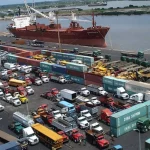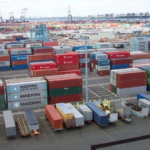On Monday, the Federal Government announced a $1.1 billion investment for the revitalization of six ports throughout Nigeria, as revealed by the Nigerian Ports Authority (NPA) in a statement. The initiative aims to address the longstanding issue of outdated infrastructure, particularly in ports like TinCan, Apapa, Rivers, Delta, Calabar, and Onne. The NPA emphasized that some of these ports, established a century ago, have not undergone reconstruction since their inception.
The deterioration of quay walls in these ports has hindered the deployment of modern cargo handling equipment, such as ship-to-shore cranes, by Terminal Operators. This, in turn, has led to prolonged turnaround times for vessels. The comprehensive rehabilitation project encompasses various aspects, including the reconstruction of quay walls, pavements, and other essential structures.
Specifically, the Tin-Can Island Port Complex (TCIPC) will undergo a reconstruction of a 2,563m Quay Wall and Pavement, along with other necessary improvements. Additionally, the Lagos Port Complex (Apapa Quays) is slated for the reconstruction of a 2,020m Quay wall to replace the outdated gravity wall (Berths 4-14).
Other ports involved in the initiative include Warri in Delta State, where there will be a rehabilitation of the collapsed 8.6 km Escravos Breakwaters, as well as Onne Port with the reconstruction of a 200m Quay Wall. The Warri Old Port (Terminal C) will see the reconstruction of an 80m sheet pile wall structure, while the Warri Old Port (Terminal A) is set for the reconstruction of a 280m quay structure. Calabar is also included in the plan, with the rehabilitation of the Calabar Dockyard, Mciver Jetty, Calabar Port Jetty reconstruction, and Millero Jetty, Calabar Port Jetty Reconstruction.
The NPA anticipates that upon completion, these revitalization efforts will enable the existing ports to operate at full capacity, significantly improving overall efficiency. As a result, the initiative is expected to reduce the turnaround time (TAT) of vessels and minimize cargo dwell times, addressing the longstanding challenges faced by these critical ports.







